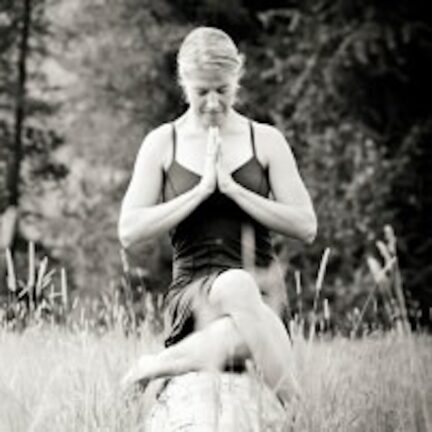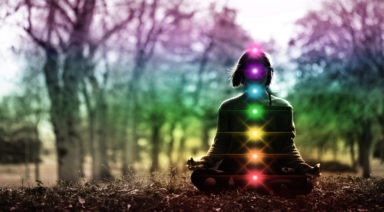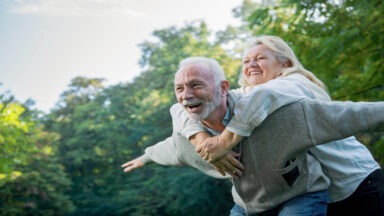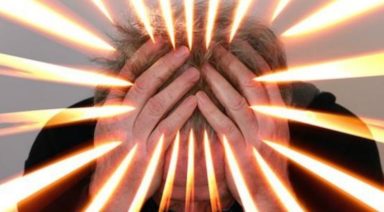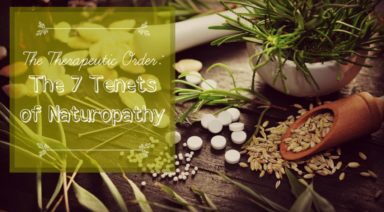Journey Through the Chakras: Go With the Flow

The second chakra is Svadhisthana and is symbolic of water. It is associated with taking pleasure and is located in the sacrum, genitals, hips, knees and low back.
Svadhisthana represents ‘the right to feel’. If we cannot interpret how we feel then it is very difficult to know what we want.
The first chakra is about everything solid. This solidity creates foundation, which gives us the base of support to rise up from. The second chakra Svadhisthana is about water and the ability to go with the flow. The form transforms into formlessness. The principles of water are fluid, feminine, and rhythmic.
Qualities of Svadhisthana Chakra
Pleasure:
Pleasure allows us to move more deeply into the temple of the body. Pleasure allows us to expand while pain creates contraction. Our sensations are so important to the experience of pleasure. When we taste good food, or take a deep breath in the outdoors, we are opening the pleasure centers and creating an extension of the spiritual dimension. Some may argue that we need to shut off our senses in order to tune into the subtler body. However the senses are the building blocks to our emotions and feelings. Without them we become lifeless and disconnected.
Unfortunately we are often taught to beware of pleasure. We don’t easily allow our self to do what we want and instead do what we should. Eventually this can lead to resentment and frustration. Svadhisthana invites us to turn on our pleasure centers and delve into the deep recesses of the feeling body.
Emotions:
The second chakra is where the emotional center of the body lies. In a balanced state we feel emotions, but do not get overridden with them. If this second chakra is turned on too much we are overly emotional meaning our emotions begin to cloud our rational judgment. When this chakra is repressed we are shut off from our emotions and we feel very little. Repressed emotion creates tension and tension creates lethargy. We need to find the way to send the emotion out (in an appropriate way). The absence of tension creates a harmonic flow between the mind and the body. This creates an even deeper pleasure within the body, allowing deeper connection with others.
Sexuality:
Sexuality is the ultimate expression of Svadhisthana yet it can also be the reason why we have many issues with movement, sensations, pleasure, desire and emotions. In our western culture sexuality has been gravely misunderstood and mismanaged. This affects the natural flow of excitation throughout the body. Guilt is the demon of the second chakra. It halts our pleasures and self-esteem. To reclaim the second chakra is to reclaim our right to feel and our right to healthy sexuality.
Balanced Svadhisthana: Healthy boundaries, having passion in life and feeling alive, the ability to go with the flow and movements are graceful, nurturing of the self.
Excessive Svadhisthana: Change is necessary in order for the mind to stay active and alive. An excessive second chakra scatters the liberating energies too soon so it does not flow through to higher chakras. Therefore it is important to be honest with your self when exploring how much change is too much.
Depleted Svadhisthana: Fear of change, energy gets trapped in the structure of the first chakra and resists fluidity, becoming hard and stiff. Little passion and too much self-control. If we experience chronic tension in the hips, low back, and glutes try and tap into the current and flow of life.
Rituals to restore Balance: Connect with water. Take hot baths, drink more water, sit by the river or ocean. Add a flow and pulse to your regular yoga poses such as swaying and rocking the body. Change a routine (running route, clothing color, meeting place). Start with nurturing yourself and then begin to apply the principles to your relationships.
Y oga poses to restore balance:
- Sufi Grind: This deep rhythmic movement of circulating the hips, glutes and low back is wonderful to connect with Svadhisthana’s water element.
- Lunge Pose/ Anjaneyasana: Gently pressing in and out with the hip in sync with the breath.
- Pigeon Pose/ Eka Pada Rajakapotasana: Imagine the breath can reach right into the tension within the body and as you exhale carry that tension up and out.
The second chakra is the prime mover of energy. As the energy moves upwards, the soul is carried on the currents of emotions and desires toward growth. Through the solid base of our first chakra we are able to surrender to the prana and follow its natural course without losing our center.
Image Credit: Leslie Prentice
Spiritual Cleansing Bath Rituals for Healing Your Aura
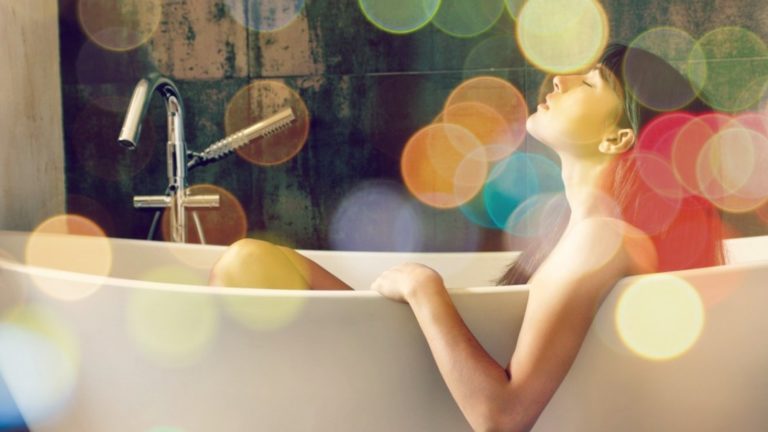
Regularly cleansing your aura and personal energy is an essential act. Whether or not you know it, you come into contact with various people and environments, all of which have their own energy vibrations. Not all of these frequencies are high and positive.
Thus, your energy field is constantly taking in and sending out vibrations. Some energy vibrations within your thoughts and external influences are low and will bring you down if left unchecked. While our energy body is constantly readjusting itself to bring our energy back into harmony, the negative energies can linger and build up over time. A monthly salt water bath is an easy and relaxing way to cleanse your aura of negative energy.
We’ve mentioned other methods before, so why a bath? It’s because it’s a great ritual that ties together the physical body with the inner spirit. When you immerse yourself in a ritual bath, you are participating in an initiation to open yourself up spiritually.
Ritual bathing cleanses you from physical and spiritual grime, thus purifying both your body and your aura. It signifies that you are willing to listen to your higher self and begin to trust something outside of your rational mind. It indicates that you are open to asking the universe to transform what you believe needs to be changed within yourself.
What Is a Spiritual Cleansing Bath Ritual?
A spiritual cleansing bath ritual is a sacred, intentional practice for releasing negativity, stress, and emotional heaviness while inviting balance, healing, and renewal. Unlike an ordinary bath, this ritual taps into the energy of natural elements—purifying salts, soothing essential oils, and gentle herbs or flowers like lavender or rose petals—chosen for their nurturing and cleansing properties. As you immerse yourself, you set intentions to let go of what no longer serves you, creating space for peace and clarity. Adding meditative touches, like mindful breathing or visualization, deepens the experience, allowing you to feel the water’s gentle energy carrying away worries. It’s a moment to honor yourself, cleanse from within, and step out feeling lighter, refreshed, and energetically renewed.
How to Perform a Cleansing Bath
A cleansing bath is a sacred, rejuvenating practice to clear your aura, release negative energy, and invite inner peace and well-being. Here’s how to get started:
- Choose the Right Time: Pick a bath time when you can be alone without interruptions. This powerful bath is best done once a month, ideally on a Friday close to a full moon for enhanced effects. Energy therapist Lidia Frederico advises against taking it around certain hours: avoid 6 am, 12 noon, 6 pm, or 12 midnight, as well as 30 minutes before and after these times.
- Prepare the Bath: Draw a warm bath and add unrefined salt. For an extra touch, add essential oils (like lavender or sage) and herbs such as rosemary or chamomile, known for their cleansing properties.
- Set Your Intention: As the tub fills, think about what you want to release or bring into your life. Light white candles and play soft music to create a peaceful environment.
- Immerse Mindfully: Step into the water slowly, immersing yourself fully. Visualize negative energy dissolving, replaced by a flow of positive energy. Deep breathing, meditation, or repeating affirmations can help deepen this experience.
- Conclude the Ritual: When you finish, let yourself air-dry if possible, or use a towel just for your head. Drain the bathwater, imagining it carrying away any residual negativity. Embrace the clarity and positive energy you’ve invited into your space.
Allow yourself to carry this renewed energy forward, feeling grounded, uplifted, and aligned with your highest self.
Physical Benefits
A spiritual cleansing bath ritual can benefit not only your spirit but also your physical well-being. Here are a few key benefits:
- Saltwater soaks help remove toxins.
- Minerals support overall health.
- Skin feels refreshed as impurities clear.
- Relieves aches and sore joints.
- Boosts circulation for a body refresh.
This ritual offers a harmonious way to nurture both body and soul, inviting healing and renewal from within.

